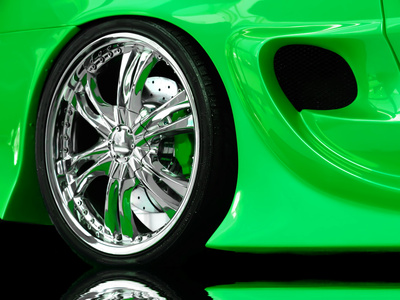
Camber is the angle that a wheel tilts when viewed from the front of the vehicle. If the top of the wheel tilts out, the wheel has a positive camber. If it tilts in, it has a negative camber. Camber measurements are usually given in degrees, but they are also sometimes given in inches. Most vehicles from the early 1900s came with fixed front and rear axles, and it is still common for vehicles to have fixed rear axles. The preferred caster angle varies significantly from make to make and model to model, and it often varies from year to year and even trim to trim of a given model.
Early Fords came with fixed axles and the preferred camber setting for most models was +0.25 to +1.0 degree, likewise most early Chevrolets with fixed axles called for a preferred camber setting of +0.5 to +1.5 degrees and early Mopar vehicles with fixed axles had an ideal camber setting of +0.25 to +0.75 degrees. However, the preferred settings could vary from model to model and year to year. It is extremely important to find the camber settings for the specific model, model year and trim before attempting to make any adjustments.
For contemporary vehicles, the camber is usually adjustable only on the front end, unless the vehicle has independent rear suspension. Vehicles without independent rear suspension, such as most pickup trucks, will have a fixed rear axle. The ideal camber is usually zero for fixed axles on contemporary vehicles. If the camber angle is not the ideal setting, it suggests a bent or damaged part rather than an alignment problem, and it cannot be adjusted by normal wheel alignment techniques and more than likely will require more extensive repairs.
It is still common for tractor-trailers, buses and RVs to come with fixed front axles. As with other types of vehicles, the camber specs can range from make to make and model to model of heavy-duty vehicles. However, Bee Line, an industry leader in heavy-duty truck alignment equipment, uses zero to +0.4 degrees as an industry standard for the preferred setting of fixed steering axles. Adjusting the camber on heavy-duty vehicles normally requires applying several tones of pressure to bend the vehicle's axle.